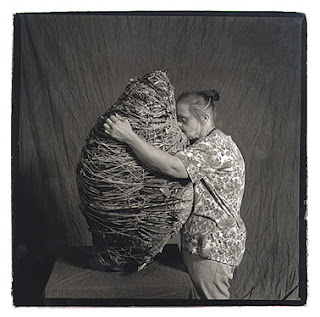Via http://www.divinecaroline.com/24169/47513-transforming-special-needs-contemporary-art#ixzz1oBmoazKv
Tom speaks about Scott after being a part of the Center for two years. What is most fascinating about Scott's practice is her development as a person to be able to reach such a sought after position. She and her work compliment one another. Scott was blind, so she created sculptural pieces that relied heavily on touch, an approach she encouraged her audience to take towards embracing her work. This concept of feeling would create a deeper connection with viewer and artwork. Connection between artwork, viewer and artist is what interests me in regards my practice. By having the Bust facing the reflective surface (installation concept for Degree Show), the audience is propelled into the installation, forcing a visible and physical relationship. What the each audience member chooses to create in terms of relationship towards the bust or rather, the person represented in the bust, is individual and personal.
Scott's life has become a tool, used through literature and film, to aid in disability awareness. Fortunately, the institutionalizing Scott experienced has evolved. There are much more opportunities presented to people with various challenges but socially and culturally, preconceptions about people with challenges are yet to evolved.
Judith Scott in 1999. Photo: Leon A. Borensztein.
Untitled, 1991-2
and 1991-3; 51 by 10 by 7 inches
and 61 by 11 by 6 inches, respectively.


No comments:
Post a Comment